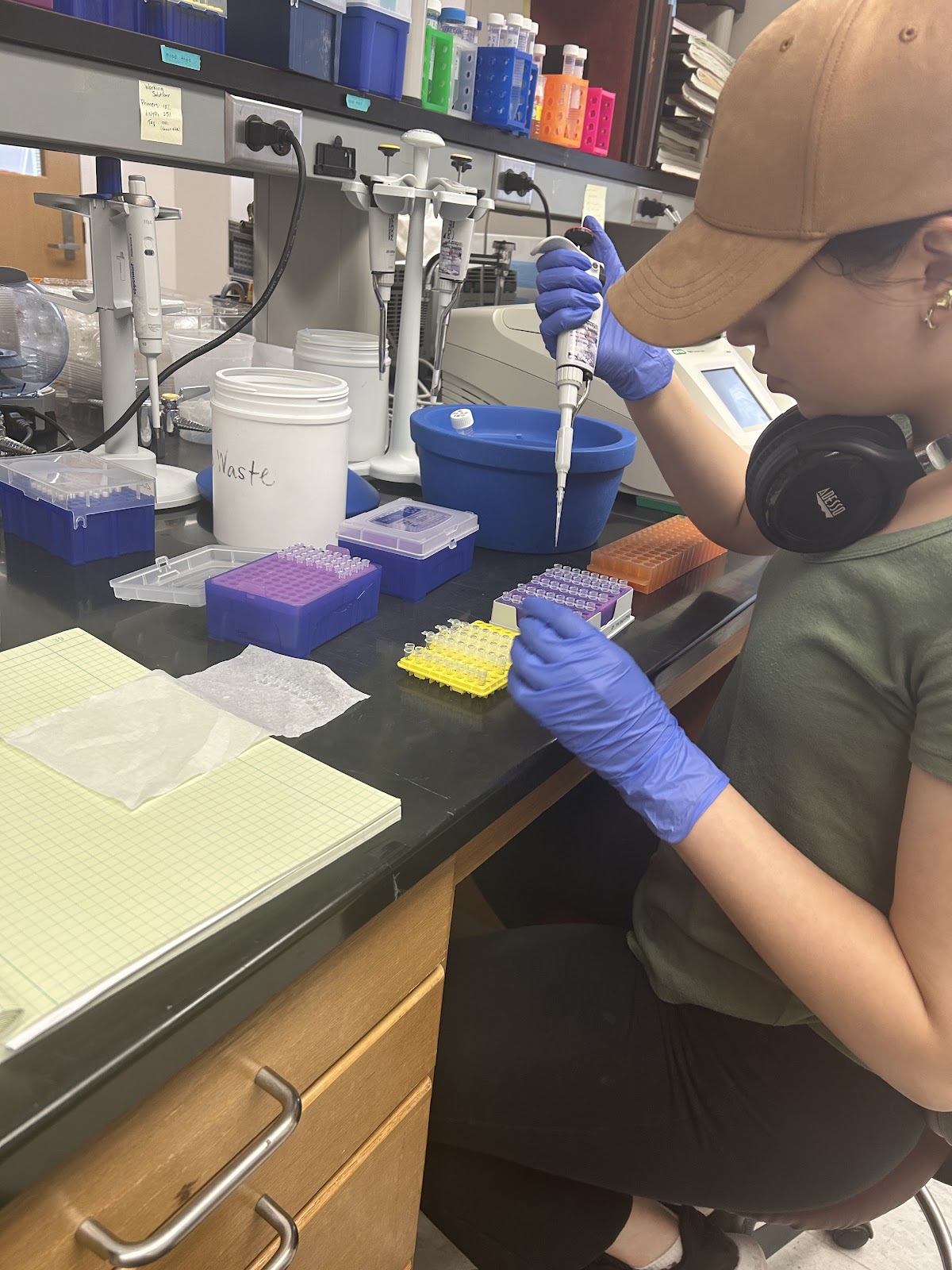Week 4
After nearly a month working at the Department of Entomology, I have got the hang of all the molecular work done to assist Ben with his research, including the most technical, polymerase chain reaction, otherwise known as PCR. PCR is a molecular technique used to amplify specific segments of DNA in vitro. Thermal cycling separates dsDNA into ssDNA and primers are used to select the DNA segment that will be amplified. In this case, multiple primers used to segment multiple target sequences to identify the different species within the Culex genus. The Primers are annealed to the template ssDNA to allow for the Taq, a DNA polymerase, to add onto the primers dNTPs to synthesize the segment of interest. This process of denaturation, annihilation and elongation repeats until billions of segments are replicated.
Having a thorough understanding of the process of PCR provides a framework for how to set up a PCR in practice, as well as a great appreciation. The lab work of PCR is simple, unlike the genetics and chemistry that allows PCR to work in the first place.
The first step is to make the master mix. A combination of all the ingredients necessary for DNA synthesis including 10.7 µl PCR water, 1.6 µl dNTPs, 0.1 µl Taq, 4.0 µl PCR buffer, and 0.4 µl of the four different primers. These quantities of ingredients are then multiplied by the number of individuals and controls used in the PCR and with the addition of four extra tubes to account for the possibility of error. The last time I performed a PCR this number was 40.
Here is a completed master mix of 40x.
The next step is to add 2 µl of DNA to each strip tube in the same order used in the DNA extraction to prevent confusion.
 |
| Here is a picture of another intern, Izi, assisting me in a PCR. She is adding the DNA from the squish prep to the PCR strip tubes. |
Then, 18 µl of the master mix is added to each tube and control strip. The control strip contains two PCR negatives with PCR water instead of DNA.
Finally, the strip tubes are placed in a thermal cycler with the PCR protocol. The amplification process takes around two hours so other tasks are done in the meantime.




Comments
Post a Comment